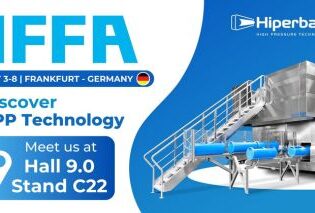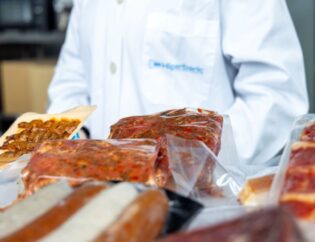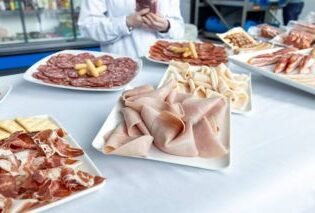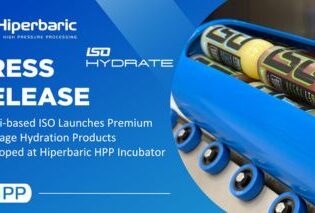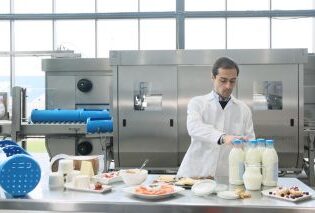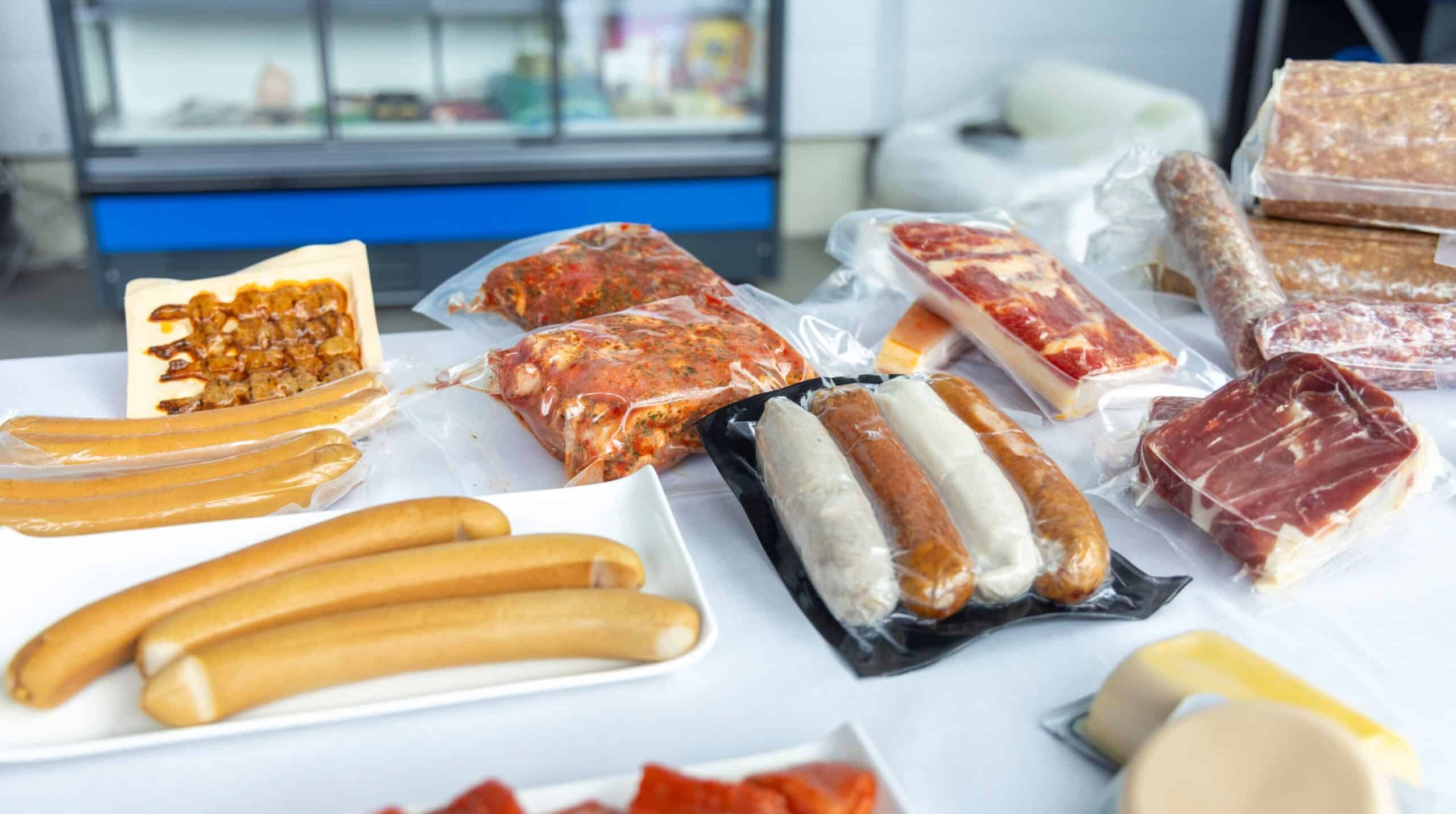

High Pressure Thermal Processing (HPTP), a method using heat and high pressure to preserve food, enhances meat product safety and quality by effectively eliminating microorganisms, including resilient spores. Studies show HPTP reduces bacteria in sausages and inactivates spores in veal and beef better than traditional heating. It also influences meat texture; for example, it can increase the water-holding capacity of sausages. While pressure alone can toughen chicken, combining it with heat reduces toughness. Duck meat processed with HPTP exhibits improved color and reduced oxidation. Overall, HPTP offers a means to produce safer meat products with improved or maintained quality attributes.
High Pressure Thermal Processing (HPTP) is an innovative technique for preserving food. It uses a combination of heat and high pressure to eliminate harmful microorganisms. This method has proven to be effective in making meat products safer, last longer, and maintain their quality, all while preserving their nutritional value and taste.
HPTP works by using both high pressure and heat to deactivate microorganisms, including resilient spores, as well as enzymes that can spoil food. The process involves preheating the food and then exposing it to high pressure, which causes the temperature to rise rapidly. This combined effect allows for sterilization to occur more quickly than with traditional heat-based methods. Because the food is exposed to heat for a shorter time, it helps to keep the flavor, nutrients, and appearance of the meat products. Operating at moderate (25–60°C) or high (60–121°C) temperatures, HPTP offers advantages over just using high pressure or heat treatments on their own. At moderate temperatures, HPTP extends the shelf life of food when refrigerated or kept at room temperature and improves the inactivation of pathogens. It also leads to greater enzyme inactivation, resulting in more stable products. At higher temperatures, HPTP can inactivate spores, making products suitable for refrigerated storage or shelf storage without spoilage.
Furthermore, HPTP preserves better nutritional and sensory qualities compared to conventional methods like retorting. It also reduces the formation of undesirable byproducts that can occur with intense heat treatments. Overall, HPTP presents a promising way to enhance food safety, extend shelf life, and maintain product quality, all while minimizing the creation of unwanted byproducts. This makes it an appealing alternative for the food industry.
How HPTP Affects Meat Products
Eliminating Bacteria
One of the primary benefits of HPTP is its ability to eliminate bacteria more effectively. Studies have shown that HPTP can reduce bacteria in vacuum-packed cooked sausages during refrigerated storage. For instance, sausages treated with HPTP at 5000 bar and 65°C for 5 minutes, followed by storage at 2°C and 8°C for 18 weeks, showed a significant decrease in bacterial counts. Notably, Listeria monocytogenes was not detected in HPTP-treated sausages during the entire storage period. In contrast, heat treatment at 80-85°C for 40 minutes achieved similar levels of microbe elimination, but L. monocytogenes was still detected during storage – Figure 1. This suggests that HPTP could be a better alternative to heat pasteurization for certain cooked meat and poultry products. Thus, HPTP extends the shelf life and enhances the safety of refrigerated cooked sausages. It provides a similar preservation effect as standard heat pasteurization but uses lower temperatures and shorter processing times. As a result, products with improved nutritional and sensory qualities can be produced.
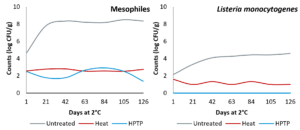
Eliminating Spores
A key advantage of HPTP is its ability to inactivate bacterial spores, which are typically resistant to many processing methods. This allows to produce shelf-stable, low-acid meat products. HPTP has demonstrated promising results in inactivating spores of Clostridium botulinum type B in low-acid meat products. One study investigated the effectiveness of HPTP on braised veal. Researchers observed a substantial spore inactivation at 6000 bar and 110°C after 5 minutes of treatment. Compared to conventional thermal treatment, HPTP matched or exceeded the results in shorter processing times. These findings highlight the potential of HPTP as an alternative to traditional retort processing for low-acid, low-fat meat products like braised veal. Another study examined the effectiveness of HPTP in inactivating Clostridium perfringens spores in beef. The researchers compared HPTP at 6000 bar and 75°C with conventional thermal processing at 75°C. HPTP resulted in a greater reduction of C. perfringens spores compared to thermal processing alone. These results emphasize the potential of HPTP as an alternative to traditional thermal processing in the meat industry.
How HPTP Changes Meat Quality
In addition to ensuring microbial safety, HPTP can influence the texture, color, and water-holding capacity of some meat products. For example, research on Toulouse sausages showed that HPTP can achieve microbial stability and increase water-holding capacity. A 15-minute HPTP process improved sausage hardness compared to conventionally sterilized sausages. However, longer processing times resulted in hardness like conventionally heat-treated products.
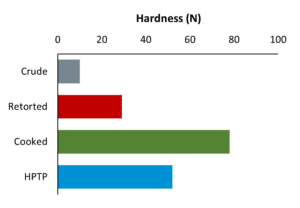
Research on chicken breast muscle has also provided insights into how heat and high-pressure interact to influence meat quality. High-pressure treatment alone increased the toughness of chicken breast muscle. However, when combined with heat, a significant reduction in toughness was observed. A study on beef also revealed a similar interaction between heat and pressure.
Furthermore, research aimed to develop a ready-to-eat water-cooked salted-duck meat product using HPTP at lower temperatures and reduced processing times (compared to thermal treatment only) demonstrated that HPTP significantly improved meat color compared to conventional methods. HPTP samples also exhibited an antioxidant-like effect by decreasing contaminants. These findings suggest that the combination of high pressure and thermal processing offers a viable alternative to traditional high-temperature cooking methods for duck meat.
Conclusion
In conclusion, High Pressure Thermal Processing offers a promising solution for enhancing food safety, extending shelf life, and maintaining product quality in the food industry. Its ability to eliminate harmful microorganisms and spores, while preserving nutritional and sensory qualities, makes it a valuable alternative to traditional methods. Additionally, HPTP’s impact on meat texture and appearance can be managed through careful control of processing conditions, allowing to produce high-quality products. As the food industry continues to seek innovative and efficient preservation methods, HPTP stands out as a technology with significant potential for widespread adoption.
If you have any questions, please do not hesitate to contact us to learn more!


